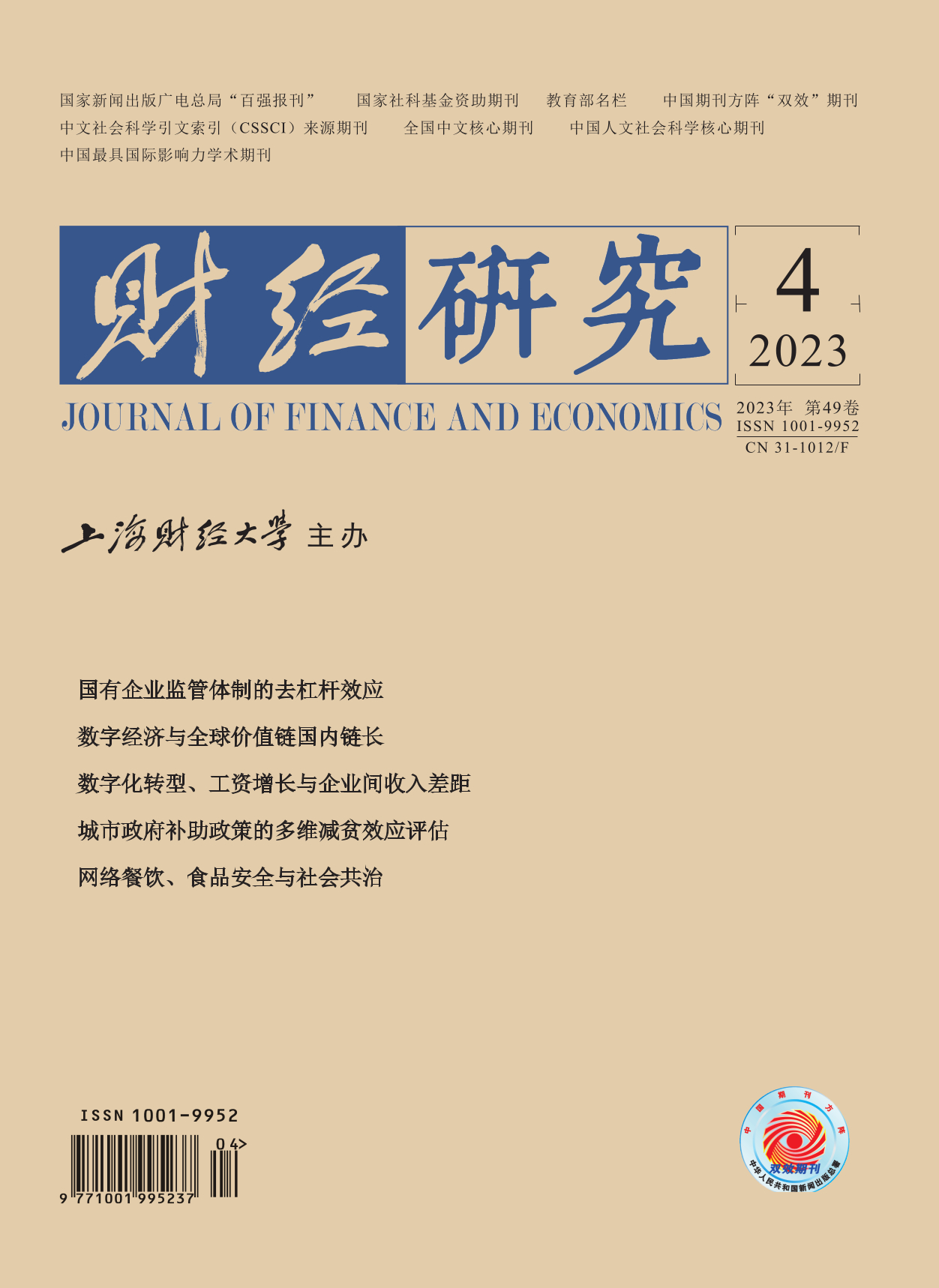在当前国内外环境错综复杂和新冠疫情冲击的影响下,企业发展面临的不确定性走高,给投资风险高、周期较长的企业创新活动带来了不利影响。同时,恢复经济活力需要企业可持续创新的支撑,而降低企业对不确定性的担忧对于促进创新至关重要。作为近年来“放管服”改革的重要内容,政府信息公开对界定政府权责范围和为市场主体营造稳定可预期的经营环境发挥着关键作用。基于此,文章考察了政府政务信息公开对企业创新的影响。文章构建了企业在政策不确定性环境下的研发和生产决策理论模型,阐述了政府信息公开对企业研发创新的影响机制。在此基础上,利用地方政府信息公开试点这一准自然实验,构造了双重差分模型,实证发现:地方政府信息公开显著提高了企业专利申请量,特别是促进了高质量专利申请,且对非国有、融资约束较高及大型企业影响更强;政府信息公开对创新的激励效应是通过降低政策不确定性和提高企业信心实现的;政府信息公开还通过推动研发创新进一步提高了企业全要素生产率水平。在全球经济社会不确定性风险加大的背景下,文章的研究对政府改善营商环境、提振企业信心、促进经济复苏和企业发展提供了参考。
政府信息公开、企业确定性预期与创新表现*
摘要
参考文献
4 陈林. 中国工业企业数据库的使用问题再探[J]. 经济评论,2018,(6):140−153. DOI:10.19361/j.er.2018.06.11
6 邓淑莲,朱颖. 财政透明度对企业产能过剩的影响研究−基于“主观”与“被动”投资偏误的视角[J]. 财经研究,2017,(5):4−17. DOI:10.16538/j.cnki.jfe.2017.05.001
7 樊纲, 王小鲁, 朱恒鹏. 中国市场化指数: 各省区市场化相对进程2011年度报告[M]. 北京: 经济科学出版社, 2011.
18 邵磊,唐盟. 政府财政透明“稳预期”了吗?[J]. 财政研究,2019,(8):37−48. DOI:10.19477/j.cnki.11-1077/f.2019.08.004
20 王永进,冯笑. 行政审批制度改革与企业创新[J]. 中国工业经济,2018,(2):24−42. DOI:10.19581/j.cnki.ciejournal.20180206.007
21 吴延兵. 中国哪种所有制类型企业最具创新性?[J]. 世界经济,2012,(6):3−25. DOI:10.19985/j.cnki.cassjwe.2012.06.002
25 谢小平,汤萱,傅元海. 高行政层级城市是否更有利于企业生产率的提升[J]. 世界经济,2017,(6):120−144. DOI:10.19985/j.cnki.cassjwe.2017.06.007
27 曾军平. 政府信息公开制度对财政透明度的影响及原因[J]. 财贸经济,2011,(3):25−30. DOI:10.19795/j.cnki.cn11-1166/f.2011.03.005
28 周黎安. 转型中的地方政府: 官员激励与治理[M]. 上海: 格致出版社, 2017.
30 Baker S R, Bloom N, Davis S J. Measuring economic policy uncertainty[J]. The Quarterly Journal of Economics,2016,131(4): 1593−1636. DOI:10.1093/qje/qjw024
31 Berkowitz D, Lu Y, Wu M Q. What makes local governments more accountable? Evidence from a website reform[EB/OL]. University of Pittsburgh Working Paper, 2019.
32 Brandt L, Van Biesebroeck J, Zhang Y F. Creative accounting or creative destruction? Firm-level productivity growth in Chinese manufacturing[J]. Journal of Development Economics,2012,97(2): 339−351. DOI:10.1016/j.jdeveco.2011.02.002
33 Chen Z B, Pan J, Wang L L, et al. Disclosure of government financial information and the cost of local government’s debt financing: Empirical evidence from provincial investment bonds for urban construction[J]. China Journal of Accounting Research,2016,9(3): 191−206. DOI:10.1016/j.cjar.2016.02.001
34 Cinelli C, Forney A, Pearl J. A crash course in good and bad controls[J]. Sociological Methods & Research, 2022.
35 Fang L H, Lerner J, Wu C P. Intellectual property rights protection, ownership, and innovation: Evidence from China[J]. The Review of Financial Studies,2017,30(7): 2446−2477. DOI:10.1093/rfs/hhx023
37 Hadlock C J, Pierce J R. New evidence on measuring financial constraints: Moving beyond the KZ index[J]. The Review of Financial Studies,2010,23(5): 1909−1940. DOI:10.1093/rfs/hhq009
38 Hall B H. The financing of research and development[J]. Oxford Review of Economic Policy,2002,18(1): 35−51. DOI:10.1093/oxrep/18.1.35
39 Hashmi A R. Competition and innovation: The inverted-U relationship revisited[J]. The Review of Economics and Statistics,2013,95(5): 1653−1668. DOI:10.1162/REST_a_00364
40 Jefferson G H, Bai H M, Guan X J, et al. R&D performance in Chinese industry[J]. Economics of Innovation and New Technology,2006,15(4−5): 345−366. DOI:10.1080/10438590500512851
41 Ke S W, Lu Y, Shi X Z, et al. Can investment incentive crowd out innovation? Evidence from China[EB/OL]. Social Science Research Network (SSRN), 2021.
42 Kim S, Lee J. E-participation, transparency, and trust in local government[J]. Public Administration Review,2012,72(6): 819−828. DOI:10.1111/j.1540-6210.2012.02593.x
43 Levinsohn J, Petrin A. Estimating production functions using inputs to control for unobservables[J]. The Review of Economic Studies,2003,70(2): 317−341. DOI:10.1111/1467-937X.00246
44 Li P, Lu Y, Wang J. Does flattening government improve economic performance? Evidence from China[J]. Journal of Development Economics,2016,123: 18−37. DOI:10.1016/j.jdeveco.2016.07.002
45 Lin Y T, Qin Y, Xie Z. Does foreign technology transfer spur domestic innovation? Evidence from the high-speed rail sector in China[J]. Journal of Comparative Economics,2021,49(1): 212−229. DOI:10.1016/j.jce.2020.08.004
46 Liu Q, Qiu L D. Intermediate input imports and innovations: Evidence from Chinese firms’ patent filings[J]. Journal of International Economics,2016,103: 166−183. DOI:10.1016/j.jinteco.2016.09.009
47 Pan J. How Chinese officials use the Internet to construct their public image[J]. Political Science Research and Methods,2019,7(2): 197−213. DOI:10.1017/psrm.2017.15
49 Pratt J W. Risk aversion in the small and in the large[A]. Diamond P, Rothschild M. Uncertainty in economics: Readings and exercises[M]. New York: Academic Press, 1978.
50 Rosenbaum P R, Rubin D B. The central role of the propensity score in observational studies for causal effects[J]. Biometrika,1983,70(1): 41−55. DOI:10.1093/biomet/70.1.41
51 Schumpeter J A. Capitalism, socialism and democracy (1st ed.)[M]. London: Routledge, 1976.
52 Xie Z, Zhang X B. The patterns of patents in China[J]. China Economic Journal,2015,8(2): 122−142. DOI:10.1080/17538963.2015.1046219
53 Xu Z X. Economic policy uncertainty, cost of capital, and corporate innovation[J]. Journal of Banking & Finance,2020,111: 105698. DOI:10.1016/j.jbankfin.2019.105698
引用本文
张明昂, 鲁书伶, 邵小快, 等. 政府信息公开、企业确定性预期与创新表现*[J]. 财经研究, 2023, 49(4): 94-108.
导出参考文献,格式为:
上一篇:政府补贴对企业就业波动的影响研究





 3613
3613  2858
2858

